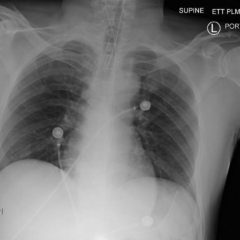The Bubble-Wrap Peritonsillar Abscess Model
ABSTRACT
Audience:
The bubble-wrap peritonsillar abscess model is designed to instruct PGY 1-4 emergency medicine residents as well as emergency medicine-bound students.
Introduction:
Peritonsillar Abscesses (PTA) are frequently encountered in clinical practice. Emergent otolaryngology consultation may not be possible. Emergency physicians must be able to perform needle aspiration of PTA. This procedure is fraught with risk due to the natural proximity of the internal jugular vein and carotid artery to the pharyngeal tonsils. Deliberate practice of clinical procedures can drastically reduce associated complications;1 however, no simulators are available for this particular purpose. Here we describe a PTA model that can be used to practice PTA drainage by novice learners.
Objectives:
At the end of this educational session, learners will be able to: 1) demonstrate needle aspiration of peritonsillar abscesses; 2) discuss the indications, contraindications and complications associated with PTA drainage.
Method:
This model uses bubble wrap, zip ties, chicken broth and liquid latex to simulate a peritonsillar abscess. Learners are then able to perform a needle aspiration of the simulated abscess from start to the end with no risk to a live patient.
Topics:
Otolaryngology, ENT, peritonsillar abscess drainage, PTA, head and neck, incision and drainage, needle aspiration.

